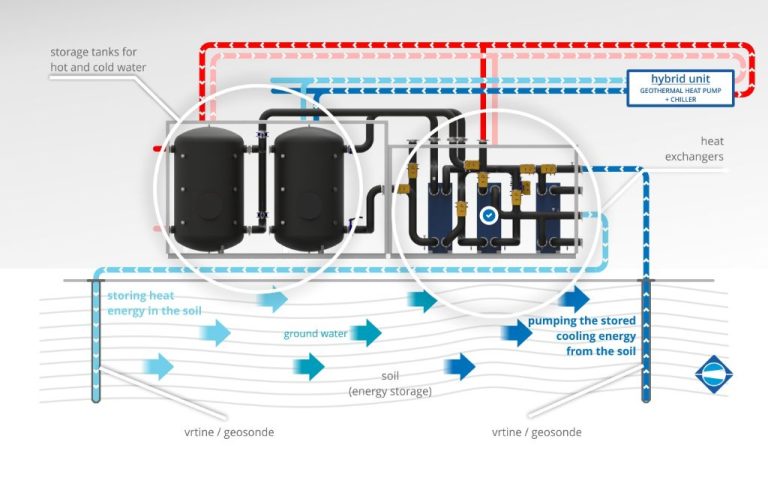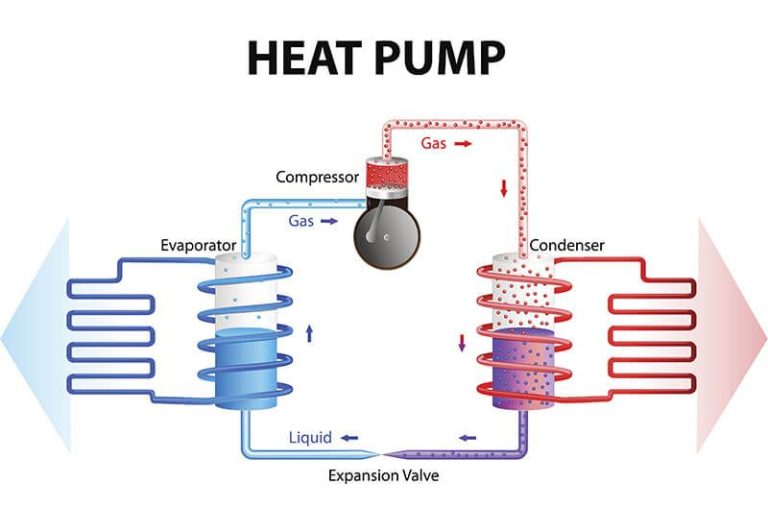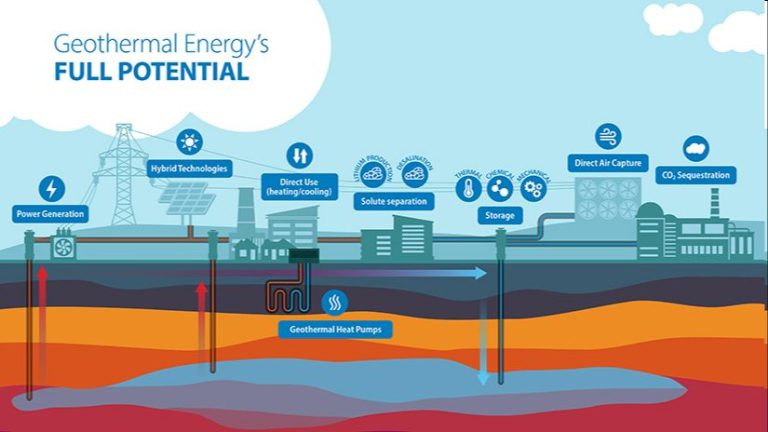Geothermal Sustainability Assessment: Towards A Balanced Approach
Geothermal energy is thermal energy generated and stored underneath the earth’s surface. It is a clean, renewable energy source that utilizes heat from the earth for electricity generation and direct heating applications. Geothermal resources provide constant baseload power that is unaffected by changing weather conditions, making them a reliable energy solution.
The development and utilization of geothermal energy offers numerous benefits. Geothermal plants produce negligible emissions, supporting environmental goals and mitigating climate change impacts. Geothermal electricity costs are insulated from fuel price volatility. The constant heat source enables geothermal plants to achieve high capacity factors of 90-98%. Local development of geothermal resources also provides energy security and economic growth opportunities in rural communities.
This article provides a comprehensive and balanced perspective on geothermal sustainability. It will examine the resource potential, utilization methods, environmental and socio-economic impacts, regulatory considerations, and sustainability metrics for geothermal systems. The goal is to objectively evaluate opportunities and challenges associated with geothermal energy, providing actionable recommendations to support the sustainable management of geothermal resources worldwide.
Geothermal Resource Potential
Global geothermal potential is estimated to be around 200 zettajoules, while the currently installed global geothermal capacity sits at around 14 gigawatts. The Untied States is the world leader in geothermal electricity generation with over 3.5 gigawatts of installed capacity, the majority of which is located in California at sites like The Geysers. Iceland, New Zealand, Mexico, and Indonesia also harness significant geothermal resources for power production and direct heating applications. Large untapped resources still remain in regions with high heat flow like the Western United States, East Africa, and parts of Asia.
Enhanced geothermal systems (EGS) represent an emerging technology that can unlock geothermal potential nearly everywhere by drilling into hot dry rock and creating a geothermal reservoir through hydraulic fracturing. While EGS has not yet been deployed at large commercial scales, pilot projects in France, Australia, and the United States have proven successful in creating geothermal reservoirs in deep crystalline basement rock.
Geothermal Utilization
Geothermal energy has a wide range of direct uses and power generation applications that provide clean, renewable energy around the world. Direct uses take advantage of the heat retained in geothermal reservoirs to provide heating for buildings, greenhouses, aquaculture and more. Hot water nearer the surface is used for bathing, therapeutic purposes, and heating homes and buildings through district heating systems.
Deeper in the earth, high-temperature geothermal resources (above 150°C) are suitable for power generation. Geothermal power plants utilize the heat to produce steam that drives turbines and generates electricity. There are different types of geothermal power plants, such as dry steam, flash steam, and binary cycle plants, that are designed to make the most efficient use of the resource temperature.
Advances in power plant technology, including hybrid plants, enhanced geothermal systems (EGS), and co-production with mineral extraction, are expanding the range of geothermal resources that can be utilized economically. With the proper site characteristics and technology, geothermal power generation can provide clean, reliable electricity to meet baseline demand.
Environmental Impacts
Geothermal energy systems can have various environmental impacts that must be considered and mitigated. Some key areas of concern include:
Land Use and Habitat
Geothermal power plants and their associated infrastructure, like pipelines and transmission lines, can disturb and fragment wildlife habitat. Careful siting and routing is needed to avoid protected areas and sensitive ecosystems.
Water Use and Contamination
Geothermal plants use water for cooling and disposing of brines. This water must either be replenished or disposed of properly to avoid depleting aquifers or contaminating water resources. Reinjecting geothermal fluids can also risk contaminating groundwater.
Air and Noise Pollution
Geothermal power plants can emit hydrogen sulfide and other gases, as well as noise pollution, that should be controlled and monitored. Proper abatement technologies are important for managing air emissions.
Induced Seismicity
Injecting fluids into geothermal reservoirs or wastewater disposal wells has potential to induce small earthquakes. Understanding seismic risks during project development and monitoring seismic activity during operations can help manage induced seismicity.
Socio-Economic Impacts
The development of geothermal energy can have significant socio-economic impacts on local communities. On the positive side, geothermal projects create economic opportunities and jobs in construction, operations, and maintenance. In areas with high unemployment, the creation of stable geothermal jobs can provide an economic lifeline. There is also potential for revenue sharing with local governments. However, there are social risks as well. The visual impacts and noise of geothermal plants can create opposition among local residents. There are often concerns about impacts on property values. Additionally, geothermal development may affect indigenous communities who have cultural or spiritual connections to the land. Consultation with these groups is essential to assess and mitigate any adverse effects. Overall, a balanced approach is needed to maximize the socio-economic benefits of geothermal energy while minimizing disruptions to local communities.
Regulatory Frameworks
Geothermal energy projects are subject to various regulatory frameworks at the international, national, and local levels. These regulations aim to ensure geothermal resources are developed sustainably and with minimal environmental impact.
At the international level, protocols like the Kyoto Protocol set targets for countries to reduce greenhouse gas emissions, encouraging renewable energy like geothermal. Initiatives by groups like the International Energy Agency and World Bank provide recommendations and financing for sustainable geothermal development globally.
Nationally, geothermal projects must comply with laws governing resource extraction, land use, air and water quality, waste disposal, protected lands, and environmental impact assessments. Permitting processes consider factors like project size, location, land ownership, and technology used. Regulations vary across countries based on policy priorities and local context.
Locally, projects require permits and approvals from municipal governments, following zoning laws, building codes, and environmental regulations. Community concerns, like impacts on groundwater, subsidence risks, or induced seismicity, may also shape local permitting processes and conditions.
Policymakers balance goals like accelerating geothermal deployment, ensuring project viability, mitigating local impacts, and respecting community interests when developing regulatory frameworks at all levels.
Geothermal Sustainability Metrics
To assess the sustainability of geothermal energy systems, quantitative metrics and indicator frameworks have been developed. These provide standardized ways to measure and compare the sustainability performance of different geothermal projects and technologies.
One key metric is energy returned on energy invested (EROEI). This calculates the lifetime energy output of a geothermal system relative to the energy required to build, operate, and decommission it. Higher EROEI values indicate better energy efficiency and sustainability. Typical values range from 10-30 for geothermal electricity generation.
Life cycle assessment (LCA) methods can quantify the environmental impacts of geothermal systems over their entire life cycle. This includes greenhouse gas (GHG) emissions, which are generally low for geothermal compared to fossil fuel plants. However, there can be significant GHG and other air emissions associated with geothermal development, which should be minimized.
Sustainability indicator frameworks like GEO-INCA provide a systematic approach to benchmark and compare the sustainability performance of geothermal projects against a comprehensive set of criteria. These span environmental, economic, social, and institutional factors. Standardized reporting of sustainability indicators can help identify best practices and areas needing improvement.
Case Studies
Geothermal energy projects provide great opportunities to demonstrate sustainability best practices. However, not all projects are created equal. Let’s examine some case studies that highlight both successful and failed initiatives.
The Hellisheidi geothermal power plant in Iceland is an excellent example of a sustainable, large-scale geothermal project. Located near the Hengill volcanic area, Hellisheidi generates over 300 MW of electricity that powers Reykjavik and surrounding towns. Strict monitoring ensures minimal impacts to the environment. Economic benefits include reliable energy and job creation. This project showcases how geothermal can be harnessed responsibly.
In contrast, the geothermal development in the Geysers region in California provides lessons learned. While initially successful, excessive production led to a rapid decline in steam pressure and electricity output. Lack of injection wells also allowed fluids to migrate into surrounding areas, increasing earthquake risk. This underscores the need for careful reservoir management and monitoring.
Smaller scale projects also highlight sustainability opportunities and challenges. The Chena Hot Springs geothermal system in Alaska uses innovative low-temperature technology for heating. Local ownership and reinvestment of revenue into the community make it a model for sustainable rural development. However, impacts to the hot springs must be carefully monitored and mitigated.
Overall, these case studies demonstrate that geothermal projects must balance utilization opportunities with responsible stewardship of the resource and community. Projects that proactively address sustainability from the outset can yield significant environmental, economic and social benefits.
Recommendations
To develop geothermal energy in a sustainable and equitable way, stakeholders should consider several best practices and policy initiatives:
Improving Environmental Practices
Geothermal operators should implement robust monitoring programs to detect potential impacts like induced seismicity, land subsidence, or brine contamination early on. Operators should use best available technologies for managing brine, controlling air emissions, and minimizing land disturbance. Regulators can require and incentivize leading environmental practices.
Community Engagement
Developers should engage affected communities and indigenous groups through inclusive public participation. They should provide opportunities for local input, address concerns about noise, viewsheds and water resources, and ensure equitable distribution of costs and benefits. Revenue sharing, local employment and community development funds can aid engagement.
Policy and Incentive Needs
Governments should establish clear permitting frameworks, provide tax incentives or feed-in tariffs, invest in resource mapping and exploration, and facilitate access to electricity markets. Policies should aim to lower costs and risks for investors while ensuring responsible development. International technical assistance can also enable countries with high geothermal potential to access the resources sustainably.
Conclusion
This report provides an in-depth assessment of the sustainability of geothermal energy systems, examining the potential benefits as well as environmental and socio-economic risks. Key findings include:
– Geothermal resources represent a significant source of renewable energy, available in countries worldwide. Enhanced geothermal systems (EGS) in particular allow access to deep geothermal reservoirs almost anywhere.
– While geothermal plants produce minimal air pollution and greenhouse gas emissions, they can pose other environmental risks like water usage, induced seismicity, and impacts on biodiversity.
– Geothermal development can provide socio-economic benefits through energy access, employment opportunities, and economic growth. However, issues around land use, equitable benefit sharing, and cultural impacts must be addressed.
– Robust regulatory frameworks and sustainability metrics are needed to maximize the potential of geothermal while minimizing risks. Life cycle assessments and environmental impact assessments should be standardized.
– With appropriate siting, mitigation strategies and community engagement, geothermal projects can be developed sustainably. But a balanced, context-specific approach is required.
Looking ahead, geothermal looks poised for significant growth globally, aided by technological innovations and supportive policies. Realizing the full potential of geothermal in a sustainable manner will require holistic assessments, adaptive management strategies, and multi-stakeholder collaboration. With a balanced approach, geothermal can make a major contribution to a renewable energy future.





